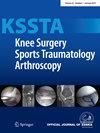Deep vein thrombosis, age and body mass index are significant risk factors for arthrofibrosis following total knee arthroplasty
Abstract
Purpose
Arthrofibrosis is a significant complication that occurs in 3.7%–10% of total knee arthroplasty (TKA) cases, causing pain and limiting the range of motion. Addressing arthrofibrosis poses a considerable challenge, given its intricate and time-consuming treatment. The aim of this study was to identify patient-related risk factors that contribute to the formation of arthrofibrosis following primary TKA.
Methods
This retrospective case–control study encompassed 1033 cases in which arthrofibrosis was identified as a cause for failure following primary TKA between 1996 and 2021. These patients were compared to a cohort of 39,572 patients from the same time frame who did not undergo any revision following primary TKA, with a minimum follow-up of 3 years. Both bivariate analysis and binary logistic regression analysis, adjusting for age, gender, body mass index (BMI) and age-adjusted Charlson comorbidity index (CCI) were conducted. The odds ratio (OR) and 95% confidence interval (CI) were presented.
Results
Patients with arthrofibrosis were significantly younger (p < 0.001), had lower BMIs (p = 0.044) and exhibited significantly lower CCI scores (p < 0.001). No significant difference in gender was observed between patients with and without arthrofibrosis. Binary logistic regression indicated that a deep vein thrombosis (DVT) following primary TKA (p < 0.001; OR = 2.21; 95% CI = 1.64–2.98) was linked to an increased risk, while rheumatoid arthritis (RA) (p = 0.016; OR = 0.25; 95% CI = 0.08–0.77) was associated with a decreased risk for developing arthrofibrosis following primary TKA.
Conclusions
In conclusion, a DVT following primary TKA increased the risk of arthrofibrosis after primary TKA, while RA decreased it. Patients with arthrofibrosis tended to be younger, have a lower BMI, and have fewer comorbidities, with no gender differences observed. Preventing DVT is crucial, and TKA should be approached cautiously in young, thin patients with few comorbidities.
Level of Evidence
Level III.




 求助内容:
求助内容: 应助结果提醒方式:
应助结果提醒方式:


